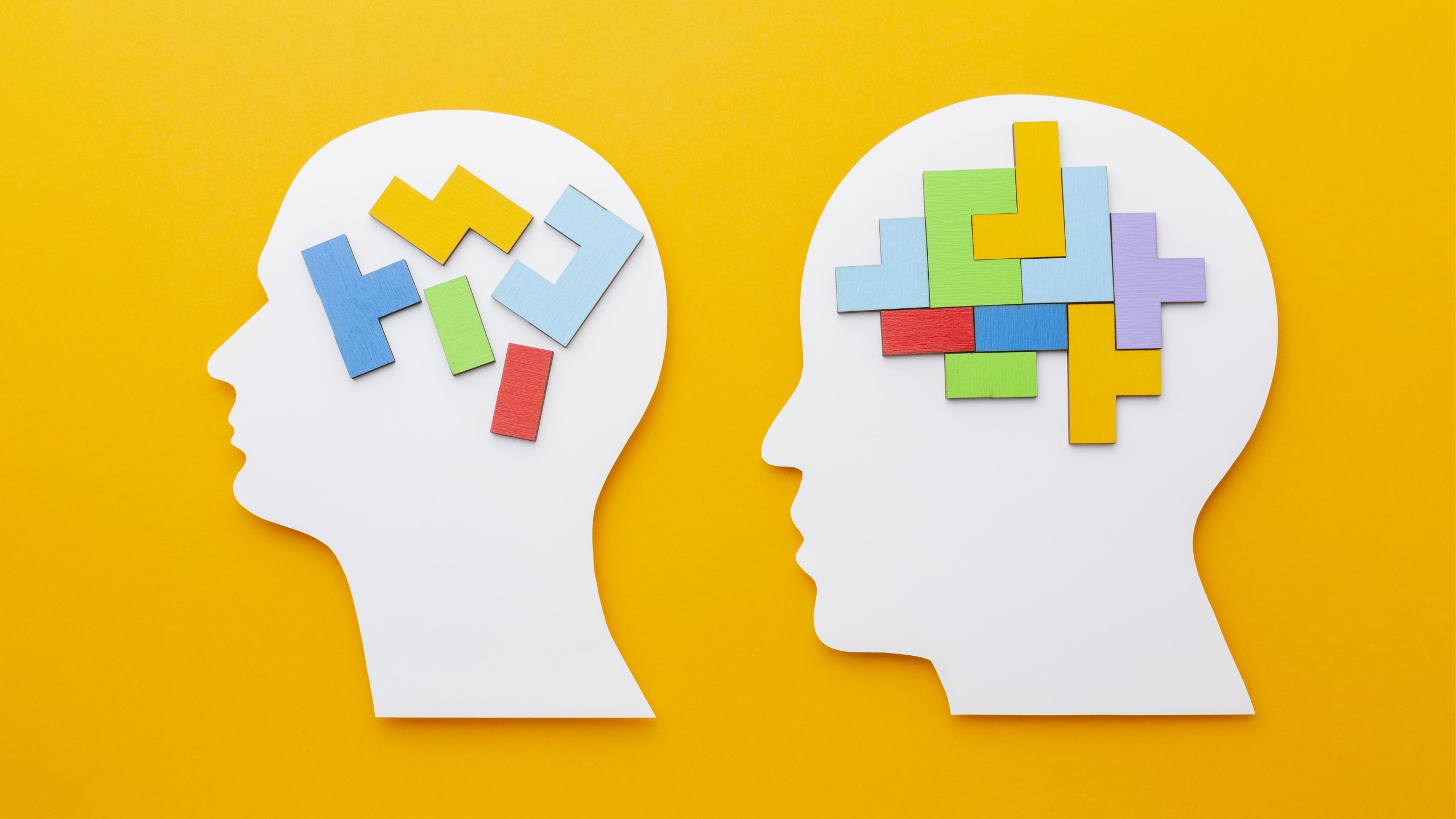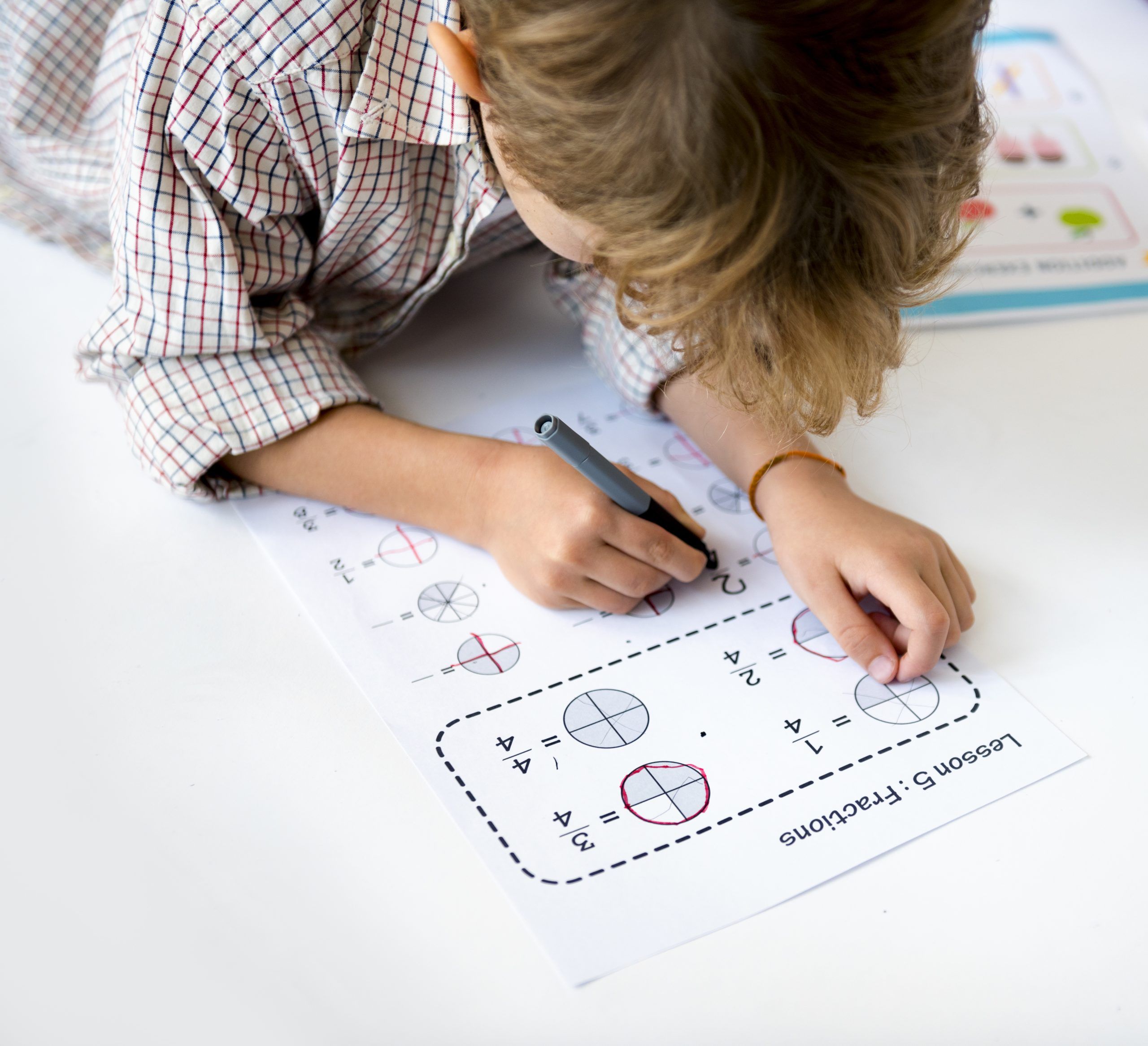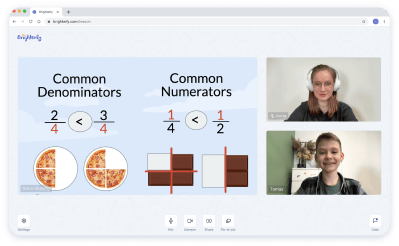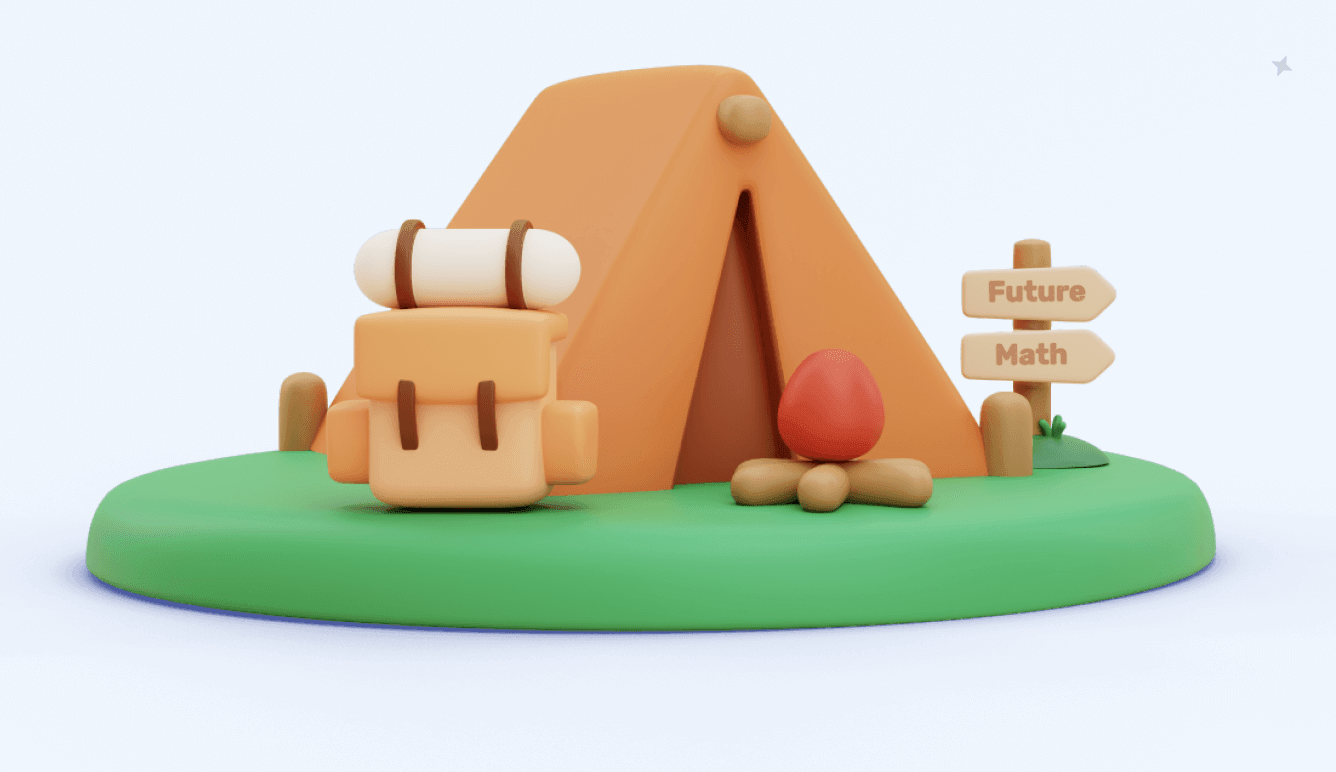51 Easy Math Riddles for Kids to Make Math Learning Fun
reviewed by Camille Ira Mendoza
March 23, 2022
19 minutes read
It is not surprising that kids find math boring, seeing as adults do, too. However, you can always make things much more fun for kids by engaging in math activities like math riddles for kids that boost their concentration and keep them engaged.
Before we go to the fun math riddles for kids, here are four significant benefits of using fun math riddles to teach math to kids:
Before we start
If your kids enjoy riddles, they will inevitably love math because riddles make learning easier. Riddles alone are not enough to learn math, however, tutors often use riddles to help kids remember math concepts easier.
Before we get into math riddles, it’s important to mention that personalized tutoring is one of the best ways to help your child understand math more quickly.
Visit the Brighterly tutoring page to get started.
Math riddles benefit studying in many more ways than just making the process more entertaining thanks to their non-standard, creative, and tricky nature. Check four benefits that math riddles provide.
Fun math riddles for kids: main benefits
- Math riddles for kids help develop logical thinking
- Math riddles for kids with answers help improve concentration
- Math riddles with answers help become more flexible in thinking
- Mathematical riddles funny ways to improve teamwork skills
More about the benefits of math riddles
Math riddles for kids help develop logical thinking
Math riddles are like puzzles that need calculations to solve. They make us think in new ways about math.
Of course, it depends on the presentation of tasks to a child. If it is successful, the kid will feel like a detective solving mysteries, and they will have a great motivation to unlock the secret, to get the solution. The major benefits of math riddles for children are that they encourage students to be creative and logical, connecting math to real life. Solving them helps develop problem-solving skills and changes a «counting minutes» attitude to the lesson.

According to a study published on ScienceDaily about riddles for kids, math puzzles have a positive impact on a child’s success in adulthood and teenage years with math and other STEM disciplines. Children who experienced riddles performed better in tasks that required rotating and moving shapes than those who did not, which is an important predictor of STEM success.
Math riddles for kids with answers help improve concentration
If your kid starts solving math riddles at a very early age, they won’t have problems with concentration in the future.

Thanks to such activities, children dive into the task at hand, and with each new task, they will get better and better at setting the maximum focus. It is highly recommended to use kids’ math riddles every day.
How math riddles can enhance concentration skills:
- Through such activities, a child learns the ability to reject distractions. At the moment of solving tasks, nothing else will exist for them but the math challenge. Later, as an adult, a person who has been actively solving such problems all the time will be more concentrated and faster in completing tasks at school and work, because there will be no moments of weakness related to distractions.
- Secondly, solving engaging math riddles requires children to plan steps with solutions, and move consistently toward a solution. It develops the ability to focus on a task for a long time. These skills are essential not only for math but also for other aspects of learning and everyday life.
- Thirdly, the lists of interesting math riddles require children to listen attentively, to understand the problem at hand, and to actively seek solutions, which in itself helps to exercise their ability to concentrate.
Math riddles with answers help become more flexible in thinking
Math riddles for kids of all ages help them think in different ways. When solving these puzzles, they learn to approach problems from various angles, becoming more flexible thinkers.
Children build essential problem-solving and social skills by exploring different solutions and working together. Math riddles with answers teach them that it’s okay to make mistakes and learn from them, giving them more confidence in facing challenges at school and in their lives.
Even simple funny math riddles for kids help with improving thinking skills. When solving math riddles, children think about the words and their meanings. This makes their language skills better. Riddles also make kids imagine things, which improves their thinking abilities.
When they talk about how they solved the riddles, they use words to explain, making them better at expressing themselves. In addition, by solving riddles, children learn new words and phrases, expanding their vocabulary.
Math riddles for young kids only? Of course not!
There is no need to drop such math activities during the teenage years either. Math riddles for middle school, as well as riddles for younger children, increase math knowledge and develop intelligence. It is advisable to practice them as often as possible, because it is similar to sports exercises that help pump your muscles, and math puzzles help pump your brain.
Mathematical riddles – funny ways to improve teamwork skills
Choose a few simple math riddles your kids will enjoy and plan activities to solve them in a team format. If you have other kids, involve them, if not, work in a team with a child 1 on 1. This will help you get closer to your kid/s, overcoming difficult tasks together.
Tell the child directly about their achievements, or if there are some problems, then guide them, and praise them for that. This way, the child will associate math with a positive experience from an early age.
And as a result, your child will think: «Yes, I can make mistakes, and that’s okay. Yes, I can solve all the math riddles easily if I make an effort. Yes, I can do this work both independently and in a team.»

You can also add teamwork for interactivity to a math challenge presentation, add Lego, or search for riddles in a video or game format. Let the kid choose a team member, and offer funny math riddles for kids to choose from. It will be even more interesting for the child to work with it.
51 Kid’s Math Riddles with answers
- Easy math riddles for kids: wordplay
- Math riddles for kids for logical thinking
- Tricky math riddles for kids on problem-solving
- Math riddles with answers for kids: percentage & ratio calculations
- Hard math riddles for kids: geometry and logic
- Few riddles for fraction calculations
- Math riddles for elementary students: math vocabulary/concepts
- Math riddles for teens: algebra and logic
- Math riddles for sequence and pattern recognition
- Easy math riddles with answers: creative problem-solving
- Math riddles with answers for kids: observational logic
- Few riddles on multiplication and logic
- Simple math riddles your kids: arithmetic and logic
Check 51 teasing math riddles for kids with answers below. There, you will also see which grades they are appropriate for – preschoolers or older children.
Easy math riddles for kids: wordplay
Category: Grade 3.
| Grade | Riddle | Answer |
| 3 |
Two math books complain to each other. What do they tell each other? |
I have so many problems. |
| 3 |
A triangle is very rude. What does it say to a circle? |
You’re pointless. |
| 3 |
I’m an odd number. But if you take away a letter from my name, I will become even. What number am I? |
Seven |
| 3 |
What does a plant grow in a math class? |
It grows square roots – ba dum tss! |
Math riddles for kids for logical thinking
Category: Grades 2-6.
| Grade | Riddle | Answer |
| 4 | Isabella has a huge family: 20 cousins, ten aunts, and ten uncles. Each cousin has an aunt who’s not Isabella’s. How is that possible? | This aunt is Isabella’s mom. |
| 2 | A family has five sons, and each of them has a sister. How many kids does a family have in total? | The family has six kids – the five sons have one common sister. |
| 4 | I say that 6 + 7 = 1. How can that be possible? | I talk about time because 6 AM + 7 hours is 1 PM. |
| 6 | When David was eight, his little brother Alex was half his age. David is 30 now. How old is Alex? | The answer: Alex is 26. |
| 4 |
Which statement is correct: 12 plus 17 is 28, or 17 plus 12 is 28? |
Both are false because 12 + 17 = 29. The explanation: This trick distracts attention from math to verb and number agreement. However, it doesn’t matter since both equations are wrong. |
| 3 |
Two fathers and two sons make wooden chairs. If each makes a wooden chair, why are there only three produced? |
The answer: There are only three people – a father, his son, and his son’s son. |
| 5 |
Lorenzo was born in 1988. In 1968, he was 20 years old. How could that be? |
It’s because Lorenzo was born in 1988 B.C. We count time backward – 1968 B.C. is 20 years later than 1988 B.C. |
| 6 |
An old woman dies on her 24th birthday. How can that be? |
She was born on February 29, in a leap year. It occurs once every four years. Consequently, 24 x 4 = 96. |
| 5 |
It’s midnight now, and it’s raining. The weather forecast says it will be warm and sunny for the next two days. Will it be sunny in 48 hours? |
No, it won’t be sunny weather because it will also be midnight in 48 hours. |
Tricky math riddles for kids on problem-solving
Category: Grade 1.
| Grade | Riddle | Answer |
| 1 |
There are four oranges, and you take three. How many do you have? |
You will have three oranges. |
| 1 |
I have three apples. If you take away two, how many apples do you have? |
2 apples (You took 2 from the original 3). |
Math riddles with answers for kids: percentage & ratio calculations
Category: Grades 5-6.
| Grade | Riddle | Answer |
| 6 |
If a box contains 15 red balls and 10 green balls, what is the ratio of red balls to the total number of balls in the box? |
3:5 (15 red balls out of 25 total balls). |
| 6 |
Mary has 7 cookies. She eats 2 of them. What percentage of her cookies did she eat? |
28.6% (2/7 * 100 = 28.6%). |
| 5 |
A box contains 20 marbles. If 25% of the marbles are blue, how many marbles are blue? |
5 marbles (25% of 20 is 5). |
Hard math riddles for kids: geometry and logic
Category: Grades 1-5.
| Grade | Riddle | Answer |
| 4 |
What should you place between 3 and 4 to make it bigger than 3 but smaller than 4? |
It’s a decimal point: 3.4. |
| 5 |
It’s the longest side of the triangle, starting with H and ending with E. What is it? |
It’s a hypotenuse. |
| 5 |
Figures with sides have it, but a circle doesn’t. What is it? |
It’s an angle. |
| 1 |
Bees love geometry. What’s their favorite figure? |
It’s a hexagon. |
Few riddles for fraction calculations
Category: Grade 3.
| Grade | Riddle | Answer |
| 3 |
Tom has 8 candies. He eats half of them. How many candies does he have now? |
4 candies (Half of 8 is 4). |
Math riddles for elementary students: math vocabulary/concepts
Category: Grades K/1-6.
| Grade | Riddle | Answer |
|
All Grades |
If you toss a coin five times, and it lands tails up each time, what are the chances it will land heads up the next time? |
The answer: A coin lands either tails or heads, so there is a 50% probability of each outcome no matter how many times you toss a coin. |
| 2 |
Amy has as many apples as there are months in a year. How many apples does she have? |
12 apples. |
| 4 |
This number can be positive or negative, and it starts with I and ends with R. What is this number? |
It’s an integer. |
| 6 |
A sphere has three, a circle has two, and a point has zero. What is it? |
Dimensions. A sphere has three dimensions, a circle has two, and a point has no dimensions |
|
K-2 |
It’s round but not a circle and looks like an egg. What is it? |
It’s an oval. |
|
K-2 |
It’s neither a circle nor an oval, but it’s round. What is it? |
It’s a sphere. |
Math riddles for teens: algebra and logic
Category: 4-6 grades.
| Grade | Riddle | Answer |
| 4 |
I am an odd number. If you subtract 10 from me, you get 15. What number am I? |
25 (25 – 10 = 15). |
| 5 |
I am thinking of a number. If you double it and then add 10, the result is 50. What number am I thinking of? |
20 (2 * 20 + 10 = 50). |
| 5 |
If a shirt costs $20 more than a hat, and the combined cost of both the shirt and the hat is $50, how much does the hat cost? |
$15 (Shirt: $35, Hat: $15). |
| 5 |
I am thinking of a number. If you add 5 to it and then multiply the result by 3, you get 24. What number am I thinking of? |
3 (3 + 5 = 8, 8 * 3 = 24). |
| 6 |
How can you make 45 using only 4? |
You have to use fractions: 44 + 4/4 = 45 because 4/4 = 1. |
| 5 |
Bob adds three numbers. Afterward, he multiplies the same numbers and gets the same result. What are these numbers? |
The answer: 1, 2, 3. The explanation: 1 + 2 +3 = 6; 1 x 2 x 3 = 6. |
| 6 |
What should you add to 55,555 to make it equal to 500? |
The answer: The minus sign. The explanation: Place minus (-) between 555 and 55 to make this equation: 555 – 55 = 500. |
Math riddles for sequence and pattern recognition
Category: Grade 5.
| Grade | Riddle | Answer |
| 5 |
Continue the sequence: 2, 4, 8, 16, 32 … |
64 because you double each consecutive number. |
Easy math riddles with answers: creative problem-solving
Category: Grades 3-6.
| Grade | Riddle | Answer |
| 3 |
If you have 5 friends and you want to give each friend 2 candies, how many candies do you need in total? |
10 candies (5 friends * 2 candies = 10 candies). |
| 4 |
I put three matches on a table. I ask you to add two matches to get eight. How can you do this? |
You can make Roman eight: VIII. |
| 5 |
A boy William adores history. He is a historian. He takes two from five and gets four. How does he do that? |
He takes letters F and E from FIVE and gets IV – Roman four. |
| 6 |
I’m a place in a city, but I am also a math problem solution. The math problem is: What should you multiply by six to get a cube? |
Times Square |
| 5 |
What should you do to make 81 x 9 = 801 correct? |
Just turn the numbers upside down. 18 x 6 = 108. |
| 5 |
I will be everything if you put me on my side. I will be nothing if you cut me in half. What am I? |
The answer: The number 8. The explanation: If you put 8 on its side, it will become an infinity symbol ∞. If you cut it on its «waist», it will become two zeros 0 0. |
Math riddles with answers for kids: observational logic
Category: from K to 6 grade.
| Grade | Riddle | Answer |
|
All Grades |
Which month has 28 days in it? |
Since all months are 30-31 days long, and February has either 28 or 29 days, they all have 28 days. |
|
K-2 |
Suppose you have six oranges and six melons in your right hand and 24 apples and eight watermelons in your left hand. What do you have? |
You have such big hands! |
|
K-2 |
A farmer bought a rooster to sell eggs for $0.1 each. The rooster lays five eggs a day. The question is, how much will the farmer earn in a week? |
The farmer will earn nothing because roosters don’t lay eggs. |
| 2 | What takes place once a year, twice a week, and never in a day? |
It’s the letter E. |
| 6 |
If a dozen eggs cost $0.12, how many can you buy for a dollar? |
You can buy 100 eggs. |
Few riddles on multiplication and logic
Category: Grades 4-5.
| Grade | Riddle | Answer |
| 4 | What is the product if you multiply all numbers on a phone’s dial pad? |
The answer: It’s zero. The explanation: Since the phone dial pad ends with a zero, multiplying anything by zero equals zero. |
| 5 |
What if I say you can multiply any number by another and get the same answer? What is this number? |
It’s zero. Multiplying anything by 0 = 0. |
Simple math riddles your kids: arithmetic and logic
Category: Grade 4.
| Grade | Riddle | Answer |
| 4 |
What is half of 2 plus 2? |
Half of 2 equals 1; 1 +2 = 3. |
Conclusion
Tricky math riddles for kids provide many more benefits besides making math classes or homework fun. While solving riddles and brain teasers, children develop math reasoning and analytical skills, learn to think outside the box, and improve concentration.
Quiz and Games are the perfect way to get the kids to listen to you during class activities and also during real-life examples!
Check out the best 70+ Math Quiz Questions from AhaSlides!
So, if you want to diversify your child’s math routine, you can take some of these 51 math riddles and have fun together.
Math sometimes comes off as a complex concept, making it hard to teach kids. However, when you use math riddles with answers for kids, you create a fun learning environment where the kids can learn more in-depth thinking patterns.









